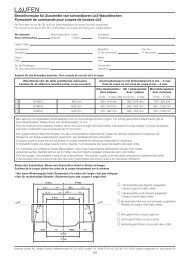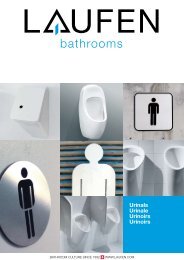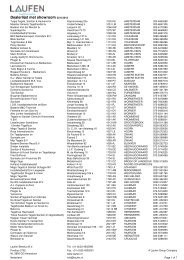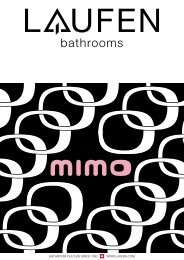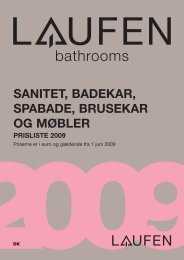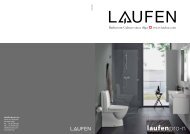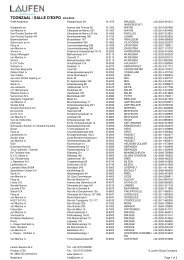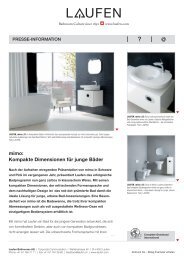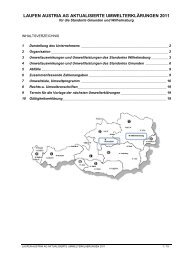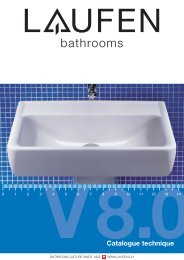Create successful ePaper yourself
Turn your PDF publications into a flip-book with our unique Google optimized e-Paper software.
KONVENTIONELLE GIESSEREI<br />
Beim traditionellsten der Giessverfahren wird der Schlicker in saugfähige<br />
Gipsformen gegossen. Sie entziehen dem Schlicker Wasser, so dass<br />
sich innerhalb von etwa 1 Stunde an der Formfläche eine feste Schicht<br />
bildet. Danach kann das Stück aus der Form gelöst, geputzt und nachbearbeitet<br />
werden. Die Formen werden über Nacht getrocknet und sind<br />
am nächsten Tag wieder einsatzbereit. Dieses Giessverfahren eignet sich<br />
für anspruchsvolle Formen und Kleinserien.<br />
LE COULAGE CONVENTIONNEL<br />
Dans le procédé de coulage le plus traditionnel, la barbotine est coulée<br />
dans des moules en plâtre poreux qui absorbent l’eau contenue dans la<br />
barbotine, de sorte qu’en une heure, une pellicule solidifiée se forme sur<br />
les parois du moule. Puis la pièce peut être démoulée, nettoyée et<br />
re-touchée. Les moules sèchent toute la nuit et sont réutilisables dès le<br />
lendemain. Ce procédé de coulage convient aux moules très délicats<br />
et aux petites séries.<br />
CONVENTIONAL CASTING<br />
With the most traditional casting processes, the slip is poured into<br />
absorbent plaster moulds. They extract the water from the slip, so that a<br />
firm layer forms on the surface of the mould within approximately 1 hour.<br />
Then the piece can be removed from the mould, trimmed and reworked.<br />
The mouldings are dried over night and, by the next day, they are ready<br />
for further processing. This casting process is suitable for demanding<br />
forms and small runs.<br />
10 11



